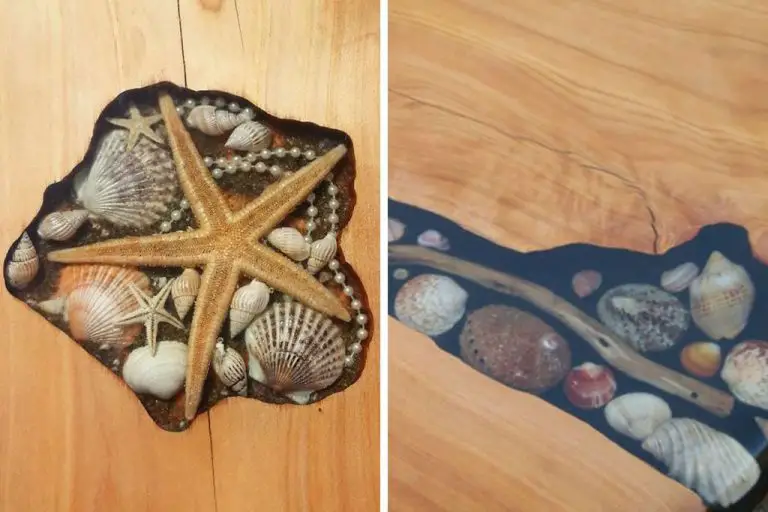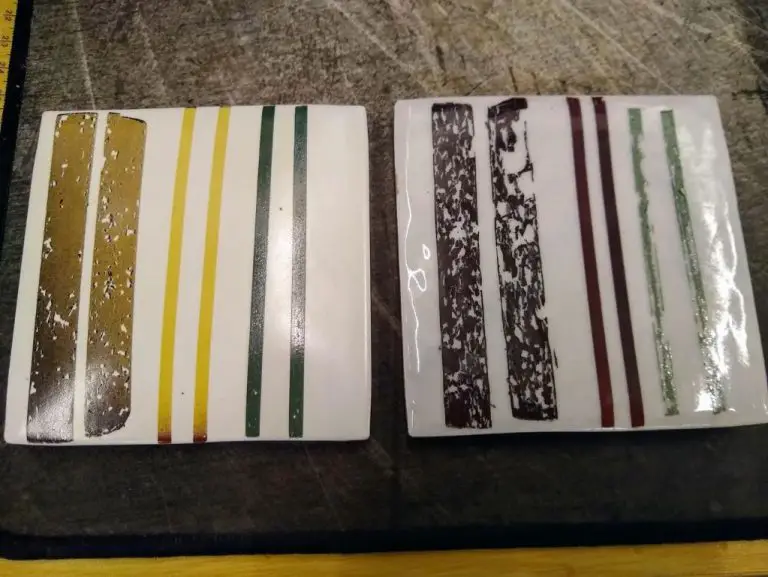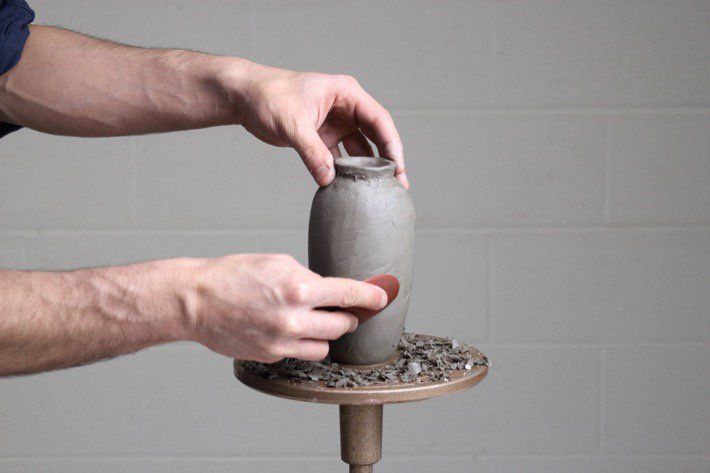What Is The Best Material To Make Stamps For Clay?
Clay stamping is a fun and creative way to add detailed patterns, images, letters, and textures to clay projects. By pressing stamps into soft clay, makers can easily imprint designs without needing to hand-carve or hand-draw each detail.
Stamps come in many different materials, shapes, and sizes. Choosing the right kind of stamp for your clay type and project can make the process much easier and give better results.
The most commonly used stamps are made of rubber, wood, silicone, or metal. Each material has its own advantages and best uses. This guide will overview the benefits of each and tips for selecting the ideal stamps for your claywork.
Polymer Clay vs Air-Dry Clay
Polymer clay and air-dry clay are the two main types of modeling clay used for arts and crafts. They each have their own advantages and disadvantages when it comes to creating clay stamps.
Polymer clay is made from PVC resin and plasticizers. It is oven-baked to cure and harden. The advantages of polymer clay include:
- Doesn’t dry out when exposed to air like air-dry clay.
- Can be reused if kept pliable by wrapping in plastic.
- Available in wide variety of colors that can be mixed and blended.
- Creates durable stamps that can impress fine details.
- Doesn’t shrink much during baking.
The disadvantages include:
- Has to be baked in oven to harden which uses energy.
- Emits fumes when baked so oven ventilation is required.
- Can be expensive compared to air-dry clay.
Air-dry clay is made from natural materials like cellulose or starch mixed with glue. It air-dries to hardness at room temperature. The advantages of air-dry clay are:
- Very inexpensive and accessible.
- Easy to work with, no baking required.
- Dries quickly within 24 hours.
- Non-toxic with minimal fumes.
The disadvantages are:
- Dries out quickly when exposed to air.
- Limited color selection compared to polymer clay.
- Shrinks as it dries resulting in loss of details.
- Not as durable as polymer clay, stamps wear out faster.
In summary, polymer clay is best for making durable detailed stamps while air-dry clay is suitable for simple stamps and quick crafts.
Common Stamp Materials
There are several common materials used to make stamps for clay crafting. Some of the most popular options include:
Rubber Stamps
Rubber stamps are a classic choice for clay stamping. They create a crisp impression and are very durable. Rubber stamps need to be cleaned carefully between uses to avoid transferring residue onto the clay.
Wood Stamps
Custom wood stamps can be carved by hand or laser cut. They generally don’t capture fine details as well as other materials. Wood needs to be sealed and cleaned thoroughly so it doesn’t deteriorate or stain the clay.
Silicone Stamps
Silicone is an excellent material for detailed stamps. It’s flexible, easy to clean, and can pick up very intricate designs. Silicone needs to be set in a frame or handle to make stamping easier.
Metal Stamps
Metal stamps like brass can imprint beautiful sharp details into clay. The metal conducts heat well and may chill the clay. Keeping the stamps clean is important to prevent oxidation.
Rubber Stamps
Rubber stamps are a popular and flexible option for clay stamping. They are typically made by carving a pattern into rubber. Rubber is a great choice for stamps because it is a soft material that gives a crisp impression.
Rubber stamps are one of the cheaper options, making them a great choice for beginners who want to try stamping without making a large investment. They can be purchased premade or hand-carved. While it is possible to carve a fine detail design into rubber, it must be fairly shallow.
Rubber stamps do have some limitations in terms of detail due to this shallow carving and the pliability of the rubber. Flatter, simpler designs tend to work best. But they are easy to use and often a good starting place for stamp makers and clay workers.
Wood Stamps
Wood is a popular material for making custom stamps for polymer clay. Wood can be easily carved or engraved to create custom designs. Wood blocks and wood tile plaques are commonly used. Wood stamps absorb water from the clay, which results in more consistently smooth stamped impressions.
When using wood stamps, choose a hardwood like maple, birch or poplar. Softer woods may warp and degrade over time. Hardwoods are denser and can be carved and shaped into detailed textures and patterns. Sand and seal the wood stamp first to protect the wood and help prevent it from degrading or warping from moisture.
Silicone Stamps
Silicone is an excellent material for making custom stamps for polymer clay because it provides fine detail and is very flexible. Silicone stamps can be molded from just about anything to get an imprint with defined lines and crisp edges.
In addition, silicone is durable, reusable, and easy to clean. Silicone stamps are resistant to heat, so they can be used on clay that has warmed up or partially cured without losing their shape.
The flexibility of silicone allows the stamp to release easily from the clay as well. The stamped pattern is sharp on both relief and impressed stamps. Overall, silicone is the best material for silicone stamps for polymer clay in terms of image quality and reusability.
Metal Stamps
Metal stamps are a professional option for clay stamping. Their most notable attributes include:
- Holds crisp edges – The hardened metal can carve fine details and retain sharp lines when imprinting the clay.
- Durable – Made from steel or aluminum, metal stamps are very sturdy and last through extensive use.
- Expensive – Being professionally-crafted from metal, they carry a higher cost than other materials. However, their longevity makes up for the higher initial investment.
DIY vs Premade Stamps
When selecting stamps for polymer clay, makers have the option of creating DIY stamps or purchasing premade ones. Both approaches have their own sets of pros and cons to weigh.
One major advantage of DIY stamps is the ability to fully customize the design. Makers can sculpt or carve any shape imaginable to impart onto clay. This allows for perfectly matching a specific project’s theme or aesthetic. However, it does require artistic skill, crafting supplies and tools, plus a significant time investment.
Premade stamps offer convenience at the expense of customizability. Tons of affordable options with varied designs are readily available from craft retailers. But makers are limited to what stamp shapes and patterns can be purchased off-the-shelf, which may not integrate seamlessly with certain clay projects.
Ultimately polymer clay creators should think about their time and skill constraints, artistic vision for stamped pieces, and budget when deciding between DIY and premade stamp routes. Both can be leveraged successfully to make beautiful stamped clay crafts or jewelry.
Caring for Stamps
Properly caring for your stamps will help them last longer and prevent damage.
Cleaning
It’s important to clean your stamps regularly, particularly when switching between different colors of clay. Use a stiff brush to gently remove any excess clay. You can also wash with mild soap and water, then dry thoroughly. For stubborn clay residue, rubbing alcohol can help dissolve and lift the clay.
Storage
When not in use, store stamps in a clean, dry, dust-free container. Silicone and rubber stamps should not be stored touching each other, as they could stick together. Wood and metal stamps can be stored together. Keeping them in plastic bags or sturdy storage containers will protect them from dust, moisture, and potential damage.
Preventing Damage
Be gentle when handling stamps to avoid scratching, denting or excess wear. Do not bend or flex stamps past their natural shape. When pressing into clay, use only light to medium pressure so the material does not become overstressed and damaged. Take care not to drop stamps on hard surfaces as this can chip or crack them.
Choosing the Best Material
When selecting a stamp material for polymer or air-dry clay, there are a few key factors to consider:
- Durability – You want a material that will hold up well to repeated pressure and imprinting without bending or breaking. Hard rubber, wood, silicone, and metal tend to be quite durable.
- Detail – The ability of the stamp to capture intricate designs comes down to the hardness and precision of the material. Rubber can struggle with fine details. Wood, metal and high quality silicone often reproduce details the best.
- Surface Texture – Materials like rubber and silicone tend to have a bit of “give” and flex which can leave texture behind in the clay. Smooth, hard surfaces like wood and metal leave cleaner imprints.
- Longevity with Clay – Certain materials like bare wood can start to deteriorate and stain when exposed to oil-based clays over time. Sealed wood, rubber, silicone and metal maintain their integrity when in contact with clay.
- Cost – Premade stamps range widely in price depending on the material. Silicone and high quality wood or laser cut metal stamps tend to be the most expensive. DIY stamps can allow you to create stamps inexpensively from items like scrap wood, rubber floor tiles or silicone molds.
When weighing these factors, often silicone emerges as the ideal – able to capture intricate details without leaving much surface texture behind. However wood and metal can also make excellent stamp materials, with proper sealing and smooth surfaces. Evaluate your budget, design needs and long term plans when deciding on a polymer or air-dry clay stamp material.



